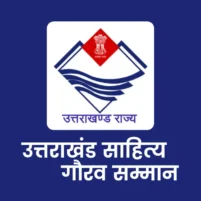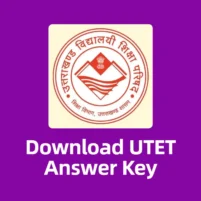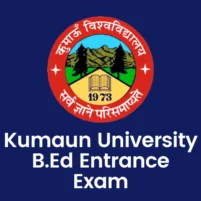UKSSSC has initiated recruitment process for the selection of Pashudhan Prasar Adhikari, Nirikshak, Adhidarshak/ Pradarshak and Sahayak Prashikshan Adhikari posts in the Uttarakhand State. The combined syllabus for the Livestock Extension Officer (LEO) and other posts has also been released by the Commission. The Syllabus and Exam Pattern is being provided on this page for candidates preparing for the Intermediate Level posts. The latest and detailed UKSSSC Pashudhan Prasar Adhikari Syllabus, Nirikshak, Adhidarshak/ Pradarshak and Sahayak Prashikshan Adhikari Exam is given below.
Pashudhan Prasar Adhikari Syllabus and Other Posts
For the latest information about the recruitment of Pashudhan Prasar Adhikari, Nirikshak, Adhidarshak/ Pradarshak and Sahayak Prashikshan Adhikari posts like vacancy details, qualification, selection procedure, application form, notification, important dates etc., visit on the link: Uttarakhand Pashudhan Prasar Adhikari Recruitment.
The competitive written exam will be of 12th (Intermediate) level and the question paper will be of 02 Hours duration which will comprise of total 100 Objective Type Multiple Choice questions (01 mark each) based on Biology/ Agriculture/ Animal Husbandry subjects as per the post.
Total Questions – 100 (Objective type)
Time Duration – 02 Hours
Negative marking of 0.25 marks will be applied for each wrong answer.
See also: Uttarakhand Samuh G Syllabus Group C Exam
UKSSSC Pashudhan Prasar Adhikari Syllabus and Other Posts Exam:
The latest and detailed Exam Syllabus for Livestock Extension Officer (LEO), Assistant Training Officer (Chemical Branch), Supervisor/ Exhibitor (Silk) and Inspector (Silk) as provided by Uttarakhand Subordinate Service Selection Commission (UKSSSC) is as follows:
UNIT-1 (Diversity of Living World) – Diversity of living organisms. Classification of the living organisms (Five kingdom classification, major groups and principles of classification within each kingdom. Systematics and binomial system of nomenclature, Salient features of animal (Non-chordates up to phylum level and chordates up to class level) and plant (major groups; Angiosperm up to class) classification, viruses, viroids, lichens, Botanical garden, herbaria, zoological parks and museums.
UNIT-2 (Structural Organisation in Animals and Plants) – Tissues in animals and plants. Morphology, anatomy and functions of different parts of flowering plants: root, stem, leaf, inflorescence, flower, fruit and seed. Morphology, anatomy and functions of different organ systems of an annelid (earthworm), an insect (cockroach) and an amphibian (frog),
UNIT-3 (Cell: Structure and Function) – Cell theory, prokaryotic and eukaryotic cell, cell wall, cell membrane and cell organelles (plastids, mitochondria, endoplasmic reticulum, Golgi bodies/ dictyosome, ribosomes, lysosomes, vacuoles, centrioles) and nuclear organization. Cell cycle, mitosis, meiosis, Basic chemical constituents of living bodies. Structure and function of carbohydrates, proteins, lipids and nucleic acids. Enzymes: types, properties and functions.
UNIT-4 (Plant Physiology) – Movement of water, food, nutrients and gases, plants and water relations, mineral nutrition, respiration, photosynthesis, plant growth and development. Human Physiology: Digestion and absorption, breathing and respiration, body fluids and circulation, excretory products and elimination, neural control and coordination, chemical coordination and regulation.
UNIT-5 (Reproduction) – Reproduction in organisms: Asexual and sexual reproduction. Sexual reproduction in flowering plants: Structure of flower, pollination, fertilization, development of seeds and fruits, apomixis and polyembryony.
Human Reproduction: Reproductive system in male and female, menstrual cycle, production of gametes, fertilization, implantation, embryo development, pregnancy, parturition and lactation. Reproductive Health: Population and birth control, contraception and MTP, sexually transmitted diseases (STD), infertility.
UNIT-6 (Genetics and Evolution) – Mendelian inheritance, Chromosome theory of inheritance, deviation from Mendelian ratio (Gene interaction incomplete dominance, co-dominance, multiple alleles). Sex determination in human beings and Honey bee Linkage and crossing over. Inheritance pattern: Mendelian disorders and chromosomal disorders in human.
DNA and RNA, search for genetic material, genetic code, replication, transcription and translation. Gene expression and regulation. Genome and Human Genome Project, DNA finger printing. Evolution: Origin of life, Theories and evidences, Adaptive radiation, Mechanism of evolution, Origin and evolution of man.
UNIT-7 (Biology and Human Welfare) – Basic concept of immunology, vaccines. Pathogens, parasites, Cancer and AIDS, Adolescence and drug/alcohol abuse. Plant breeding, tissue culture, single cell protein, food production, animal husbandry. Microbes in household food processing, industrial production, sewage treatment, energy generation, bio-control agents and bio-fertilizers.
UNIT-8 (Biotechnology and its Application) – Principle and process; Recombinant DNA Technology; Application of biotechnology in Health, Agriculture and Environment, Genetically Modified (GM) organisms, Bio-safety issues.
UNIT-9 (Ecology and Environment) – Ecosystems: components, types, energy flow, nutrients cycle and ecosystem services. Organism and population: Organism and its environment, population and ecological adaptations. Biodiversity and Conservation: Biodiversity concept, patterns and importance, Loss of biodiversity, Conservation and management, Hot spots, endangered organisms.
Protected Areas (Biosphere Reserves, National Parks and Sanctuaries), Wetlands. Environmental issues. Pollution, Forest fires, floods and landslides in Uttarakhand- causes and remedies.
UNIT-10 (Agriculture Biology) – Soil taxonomy and Soils of India; Soil and its constituents; pH of soil; Farming System; Organic Farming; Economic importance and cultivation techniques of agronomic crops (rice, wheat, mustard, maize, sorghum, barley, sugarcane), horticultural crops (potato, tomato, mango, apple, litchi, citrus, rose, marigold); Plant Propagation; Mineral nutrition/ fertilizers.
Plant protection/ Pesticides/ Insecticides/ Herbicides; Weather Forecast; Micro and macro Economics; Economic importance of Insects; Mushroom Production; Management of farms and farm animals; Important breeds of livestock animals; Major diseases of livestock; General information about milk quality and the products made up of milk; Balanced Food for livestock; Nutritional want Milk and egg.
UNIT-11 (Some Basic Concepts of Chemistry) – General Introduction: Importance and scope of chemistry. Historical approach to particulate nature of matter, Laws of chemical combination: law of conservation of mass, law of constant proportion, law of multiple proportion. Gay Lussac’s gaseous law, Calculations based on these laws.
Dalton’s atomic theory: concepts of elements, atoms and molecules, Atomic and molecular masses, Equivalent weight (acid, base and salts). Mole concept and molar mass: percentage composition, empirical and molecular formula, chemical reactions and stoichiometric calculations. Avogadro’s law. Calculations based on normality, molality, molarity, mole fraction and ppm.
UNIT-12 (Structure of Atom) – Discovery of electron, proton and neutron; Atomic number, Isotopes, isobars and Iso-electronic species. Atomic models (Thomson’s, Rutherford’s and Bohr’s) and their limitations. Schrodinger’s wave equation. Shells and subshells, Concept of orbitals, Shape of s, p and d orbitals, Quantum numbers, Aufbau’s principle.
Hund’s rule, Pauli’s exclusion principle. Dual nature of matter and light, de-Broglie’s relationship, Heisenberg uncertainty principle. Electronic configuration of atoms and ions, Stability of half-filled and completely filled orbitals, Types of spectra (emission and absorption), Hydrogen spectrum and line spectra.
UNIT-13 (Classification of Elements and Periodicity in Properties; s and p-Block Elements) – Development of periodic table, Modern periodic law and present form of periodic table. Trends of variation in properties of elements: atomic radii, ionic radii, ionization energy, electron gain enthalpy, electro negativity and oxidation state in groups and periods. s and p-block elements: Introduction, diagonal relationship, Trends in chemical reactivity with oxygen, water, hydrogen and halogens. Some important compounds: Silicones, silicates and zeolites.
UNIT-14 (Chemical Bonding and Molecular Structure) – Types of Bonds (ionic, covalent and coordinate bonds), Bond parameters. Lewis’s structure. Polar nature of covalent bond, Covalent character of ionic bond, Hybridization involving s, p, and d orbitals. Shapes and geometry of molecules and ions. Valence, bond theory, Hydrogen bond, VSEPR theory, Molecular orbital theory (theory of home nuclear diatomic molecules), Hydrogen bond.
UNIT-15 (Thermodynamics) – Concepts of system and surrounding. Work, Heat, Energy, Extensive and Intensive properties, State functions. Thermodynamic process based on variables. First law of thermodynamics: internal energy, enthalpy, heat capacity and specific heat, calculation of AU and AH. Hess’s law of constant heat summation and its applications.
Enthalpy of: bond formation, bond dissociation, combustion, atomization, sublimation, fusion. Concept of entropy. Criteria of spontaneity. Free energy change for spontaneous and non-spontaneous processes.
UNIT-16 (Equilibrium) – Equilibrium In physical and chemical processes, Dynamic nature of equilibrium. Law of mass action, Equilibrium constant, Factors affecting equilibrium, Le Chatelier’s principle. Ionic equilibrium: ionization of acids and bases, degree of ionization, Ostwald law of dilution, Concept of pH {acid and base), Buffer solutions, Solubility product, Common ion effect (with illustrative examples).
UNIT-17 (Redox Reactions and Electrochemistry) – Redox reactions: Concept of oxidation and reduction, Redox reactions, Oxidation number, Application of redox reactions. Electrochemistry: Conductance in electrolytic solutions, Specific, molal and molar conductivity, Variations of conductivity with concentration, Kohlrausch’s Law, Electrolysis and laws of electrolysis.
Electrochemical cell, Electrochemical series and its application, EMF of a cell, Standard electrode potential, Standard hydrogen electrode, Nernst’s equation and its application, Fuel cell and corrosion. Dry cell: Electrolytic ceils and Galvanic cells.
UNIT-18 (d and f-Block Elements and Coordination Compounds) – d and f-block elements: General introduction, Electronic configuration, Characteristics of transition metals, General trend in properties of the first row transition metals: metallic character, ionization enthalpy, oxidation states, ionic radii, colour, catalytic property, magnetic properties, Interstitial compounds, Alloy formation. Preparation and properties of K2Cr2O7 and KMnO4.
Lanthanides: Electronic configuration, Oxidation states, Chemical reactivity and Lanthanide contraction. Actinoids: Electronic configuration and oxidation states. Coordination compounds: Introduction, ligands, coordination number, colour, magnetic properties, (inner and outer orbital complexes), Shapes and geometry, IUPAC nomenclature of mononuclear coordination compounds, isomerism, Application of coordination compounds.
UNIT-19 (Chemical Kinetics) – Rate of a reaction (average and instantaneous), Factors affecting the rate of reaction (concentration, temperature, surface area and catalyst), Order and molecularity of a reaction, Rate law and specific rate constant, Integrated rate equation and half life period (Zero and first order reaction), Concept of collision theory.
UNIT-20 (General Organic Chemistry) – General introduction, Methods of qualitative and quantitative analysis. Classification and IUPAC nomenclature of organic compounds. Fission of a covalent bond. Reagents: electrophiles and nucleophiles. Catenation. Electronic displacement in a covalent bond (inductive effect, electrometric effect, resonance and hyper conjugation) and their applications.
Reaction intermediates (free radicals, carbocations and carbanions). Types of organic reactions (Substitution, addition, elimination and rearrangement). Isomerism and its types. Alkenes: Nomenclature, isomerism, conformation (ethane only), Methods of preparation, Physical and chemical reactions including free radical mechanism of halogenation, Combustion and pyrolysis.
Alkenes: Nomenclature, Structure, Bonding and geometrical isomerism, Preparation and properties, Markownikov’s rule and anti Markownikov’s rule, Ozonolysis, Oxidation and Mechanism of electrophilic addition reaction. Alkynes: Nomenclature, structure and bonding, Methods of preparation, Physical and chemical properties, Acidic character of alkynes.
UNIT-21 (Aromatic Hydrocarbons) – Introduction, IUPAC nomenclature, Aromaticity and Huckel’s rule. Benzene: Methods of preparation, Physical and chemical properties, Mechanism of electrophilic substitution reaction. Nitration, sulphonation, Friedel craft’s alkylation and acylation, ortho, para and meta directing groups in monosubstituted benzene.
UNIT-22 (Haloalkenes and Haloarenes) – Classification, IUPAC nomenclature, nature of C-X bond, Methods of preparation, Physical and chemical properties, Substitution reactions (SN1 and SN2), Polyhalogen compounds.
UNIT-23 (Oxygen and Nitrogen Containing Organic Compounds) – Alcohols: Classification, IUPAC nomenclature, Distinguish between primary, secondary and tertiary alcohols, Methods of preparation, Physical and chemical properties along with name reactions. Ether: Classification, IUPAC nomenclature, Methods of preparation, Physical and chemical properties along with name reactions.
Phenol: IUPAC nomenclature, Methods of preparation, Physical and chemical Properties along with name reactions. Acidic character of phenol. Aldehydes and Ketones: IUPAC nomenclature, Methods of preparation, Physical and chemical properties along with name reactions.
Ester: IUPAC nomenclature, Methods of preparation, Physical and chemical properties along with name reactions. Amines: Classification, IUPAC nomenclature, Methods of Preparation, Physical and chemical properties along with name reactions. Distinguish between primary, secondary and tertiary amines.
UNIT-24 (Applied Chemistry) – Chemistry of carbohydrates, Chemistry of proteins, Lipids and Polymers. Pollution, Air, water and soil pollution. Chemical reactions in atmosphere, Smog. Major atmosphere; pollutants, Acid rain, Ozone layer depletion and its effect, Greenhouse effect and global warming.
Pollution due to industrial wastes, Green chemistry as an alternative tool for reducing pollution, Strategy for control of environmental pollution. Tranquilizers, Analgesics, Antibiotics, Food preservatives, Coloring agents, Soap and detergents, Artificial sweeteners.
See also: Uttarakhand Govt All Recruitment and Exam Updates
LEO and Other Posts Recruitment
Search any information available on this site by the help of the search box above. You may visit later for more updates related to Pashudhan Prasar Adhikari Syllabus, Adhidarshak (Pradarshak), Nirikshak Resham, Sahayak Prashikshan Adhikari Exam etc.



